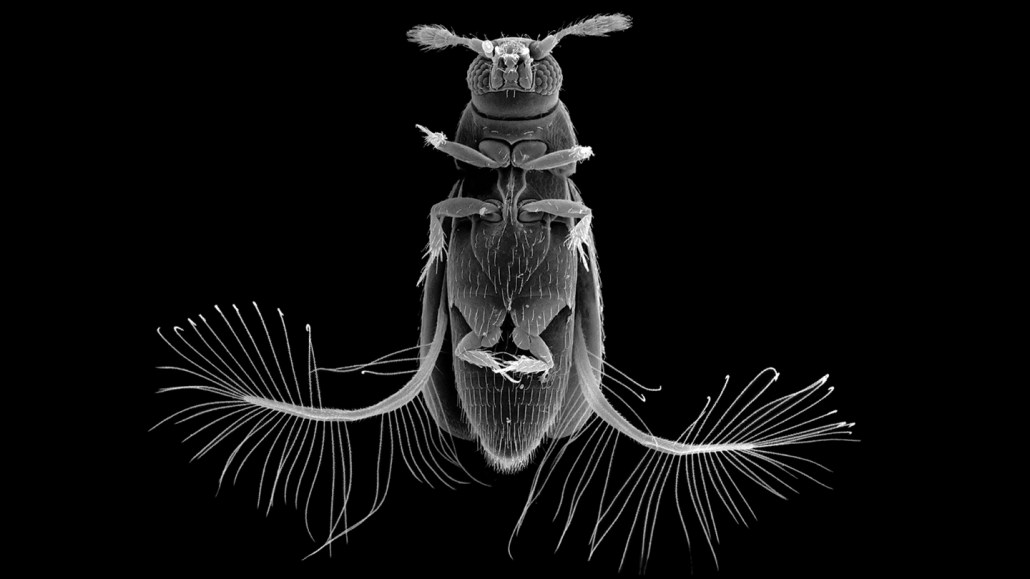These tiny beetles fly fast thanks to wing bristles and a weird, wide stroke
Here’s how the miniature insects match the speed of beetles three times as big

Studying one of the smallest featherwing beetles, Paratuposa placentis (shown in this microscope image), revealed that the insect’s bristled wings are key to its unique flight style.
S. Farisenkov et al/Nature 2022 (CC BY 4.0)






